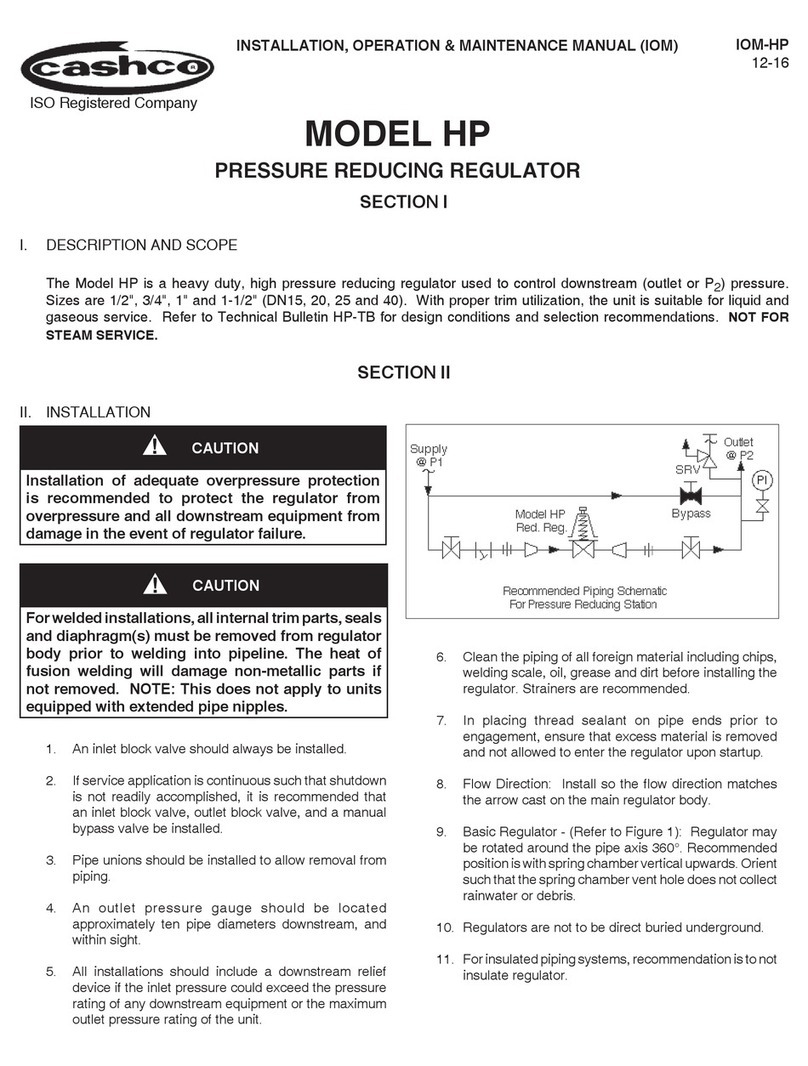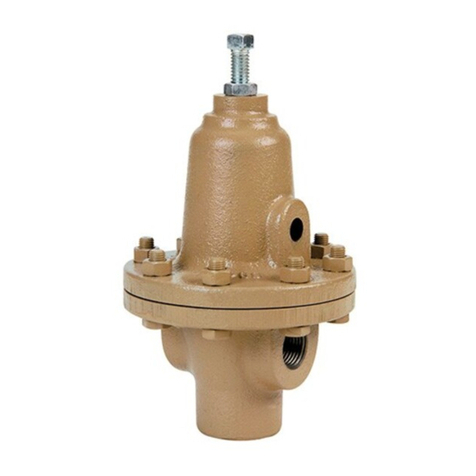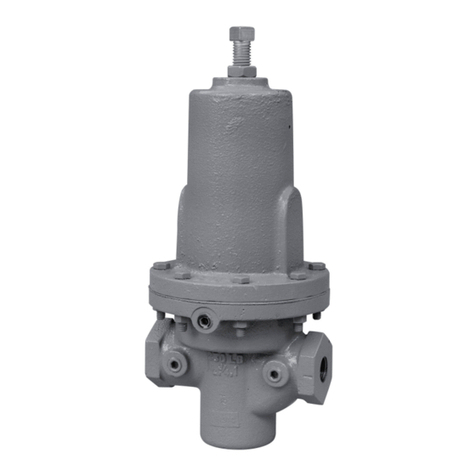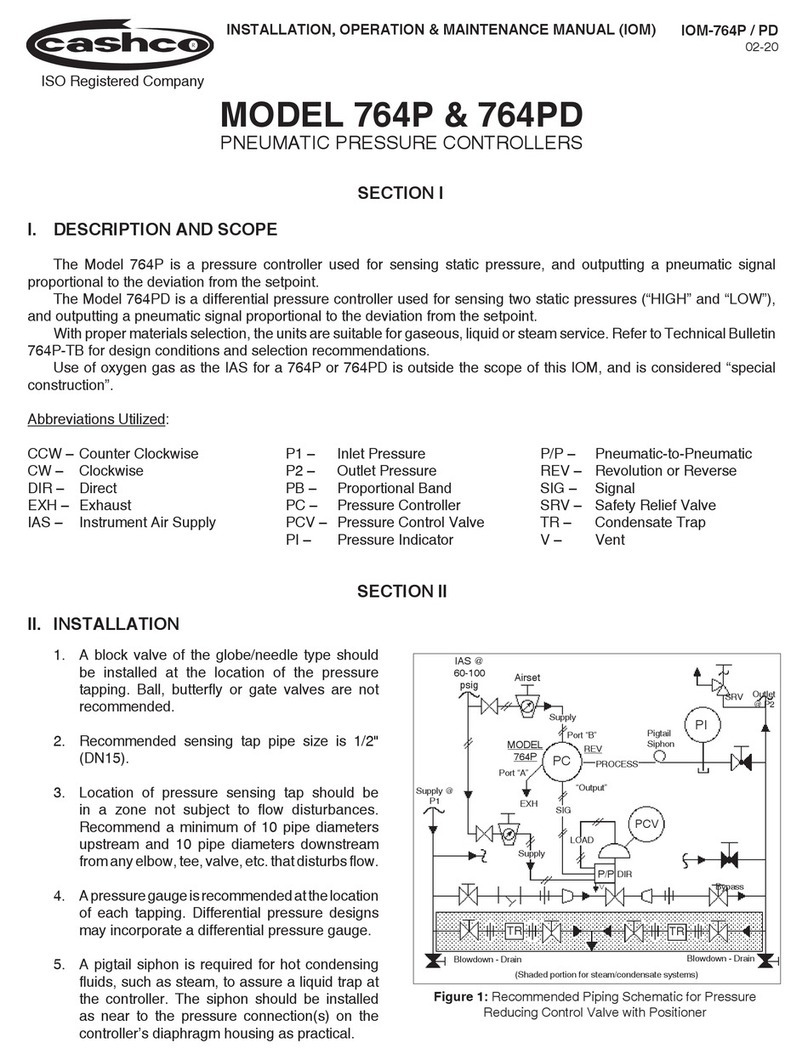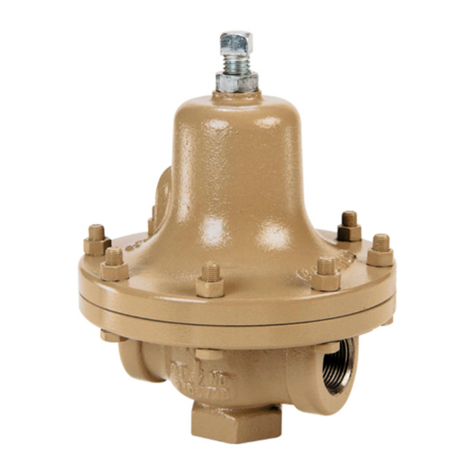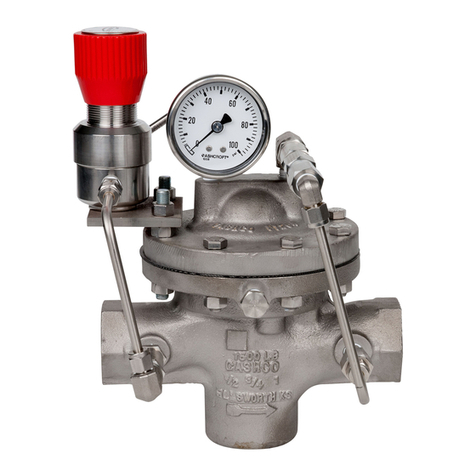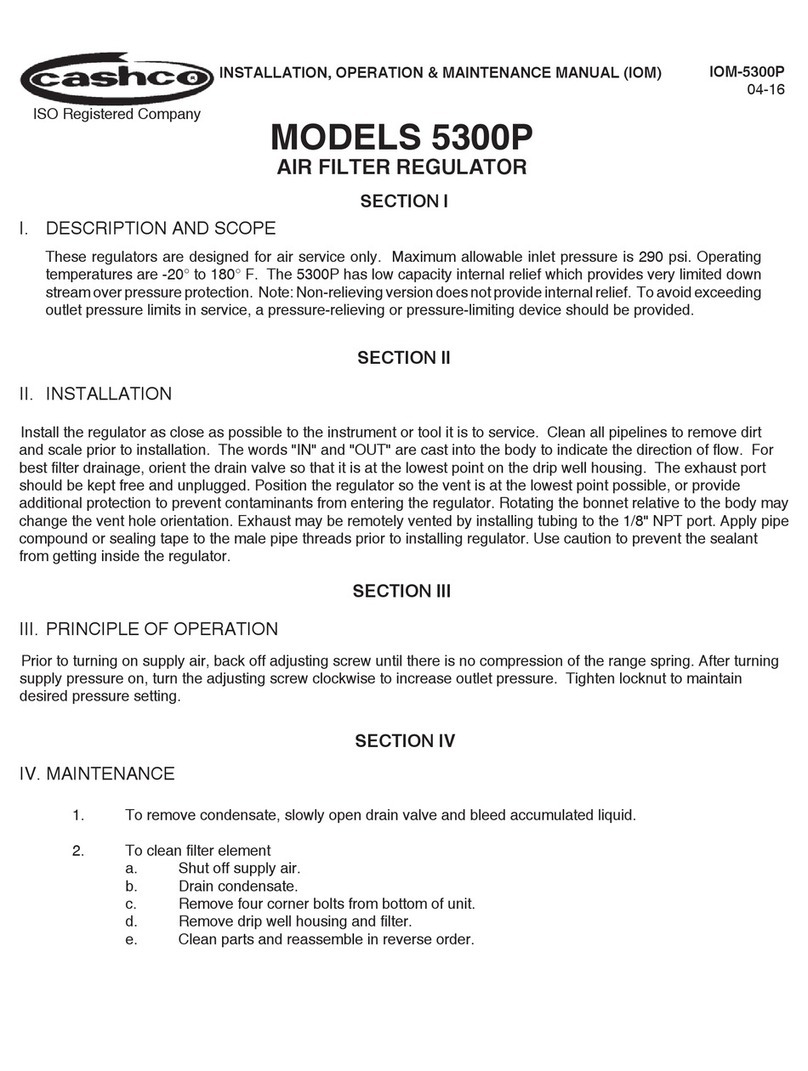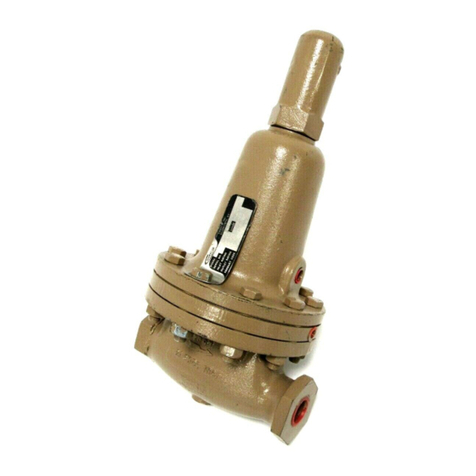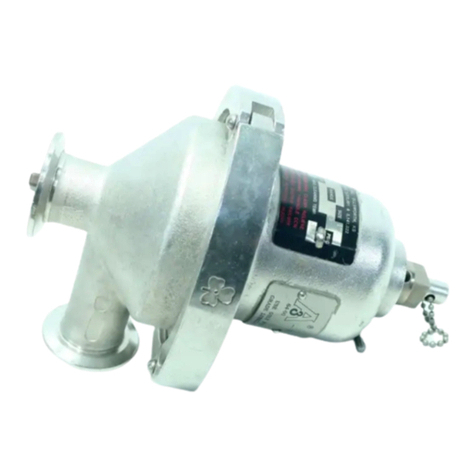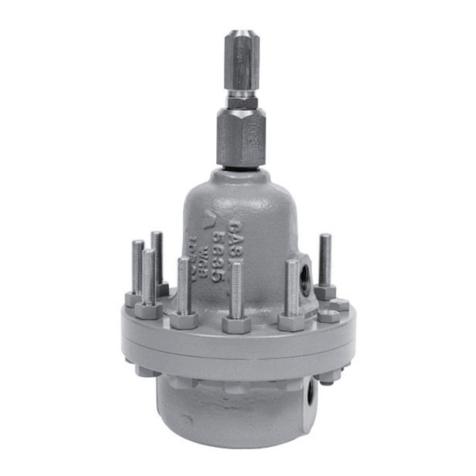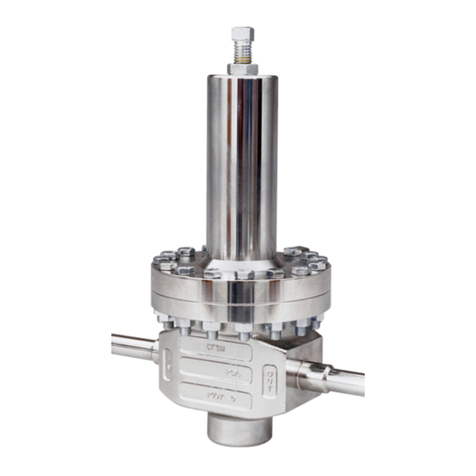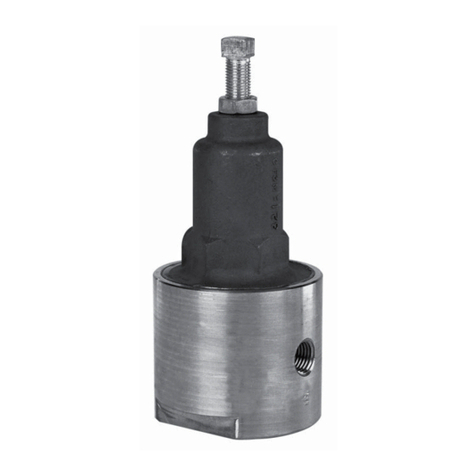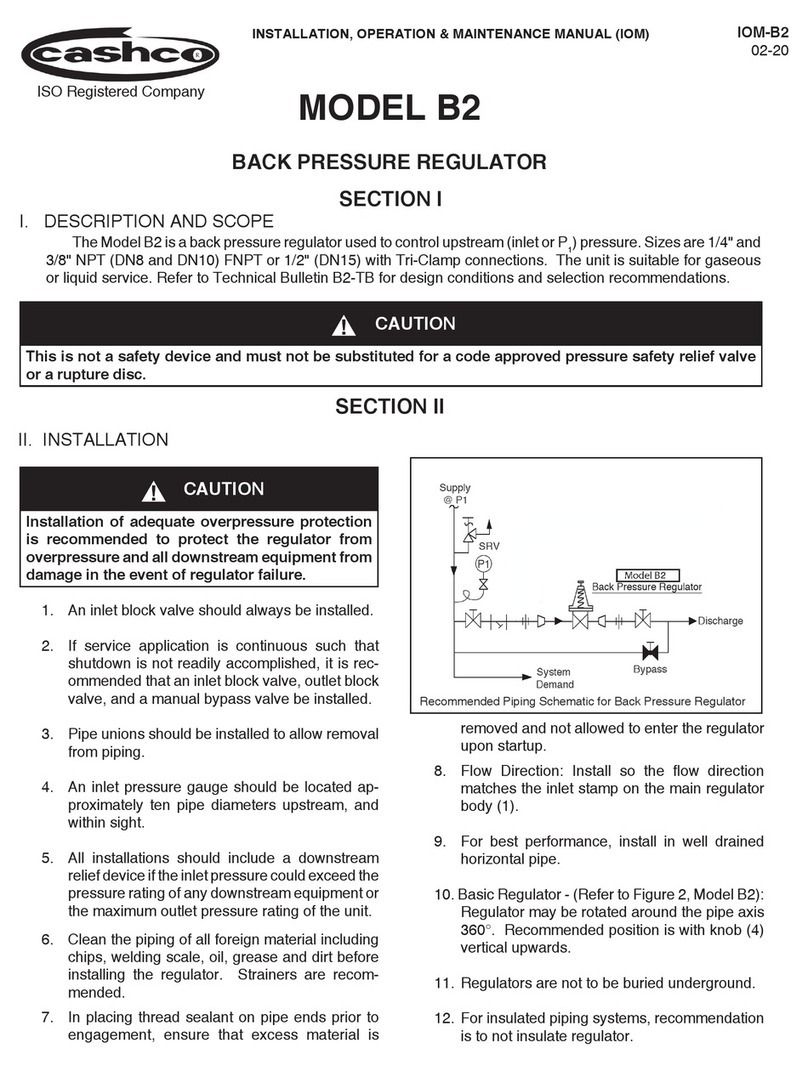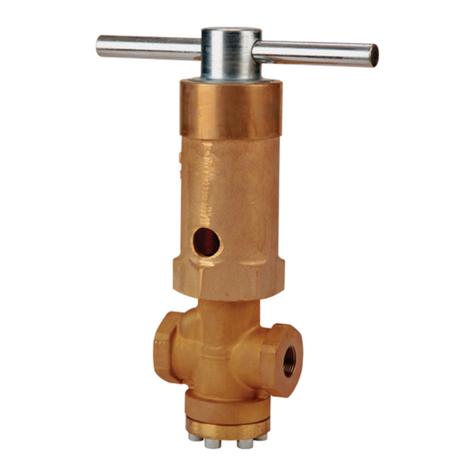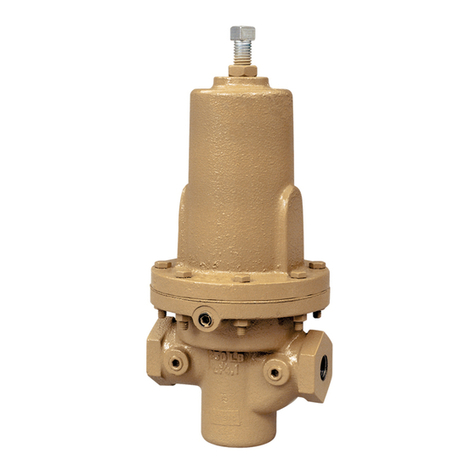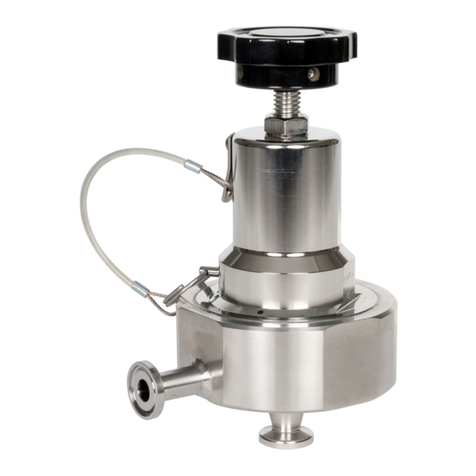
9
IOM-DA1
e. Type PW:
1. Place wiper washer (17.1) into “cup”
of Wiper Seal (16). Holding these
parts (17.1 & 16) between thumb and
forefinger, insert into cage (19) at an
approximate 45° angled approach
with wiper washer (17.1) on bottom,
wiper seal (16) on top with turned-
down lip of wiper seal (16) entering
cage (19) first. Rotate wiper seal (16)
and wiper washer (17.1) to a level
position approximately half way down
into cage (19). Allow wiper washer
(17.1) to rest on bottom of cage (19).
2. Stretch corrugated metal piston ring
energizer (27.6) over lower circumfer-
ence of piston-guide bearing (13).
Using thumbs work the energizer
(27.6) into the piston-guide bearing
(13) groove.
3. Spread a piston ring seal (27.5) and
slide over lower circumference of
piston-guide bearing (13), taking care
not to “cut” piston ring seal (27.5).
Using thumbs, work the piston ring
seal (27.5) into the groove of the
piston-guide bearing (13). Repeat
this procedure with a second piston
ring seal (27.5). NOTE: A piston ring
assembly (PRA) consists of one metal
corrugated energizer (27.6) and two
piston ring seals (27.5).
4. Position piston-guide bearing (13)
over and into upper end of cage (19)
until the lower piston ring seal (27.5)
touches the upper lip of the cage (19).
While gently applying force to press
the piston-guide bearing (13) into the
cage (19), simultaneously use fingers
to lightly circumferentially press the
first (lower) piston ring seal (27.5)
inwards into the piston-guide bearing
(13) groove until the first piston ring
seal (27.5) “slips into” the cage (19).
Repeat for the second piston ring seal
(27.5).
f. Type UC:
1. Position u-cup seal (27.3) over
lower circumference of piston-guide
bearing (13). Ensure that the u-cup
seal (27.3) is oriented with the center-
open-downwards as shown in Figure
1, as the u-cup seal (27.3) depends
upon the P1-Inlet Pressure to pres-
sure activate the seal for proper seal-
ing action.
2. Position piston-guide bearing (13)
over and into upper end of cage (19)
until the cap seal (27.1) edge touches
the upper lip of the cage (19). While
gently applying force to press the
piston-guide bearing (13) into the
cage (19), simultaneously use fingers
to lightly press the u-cup seal (27.3)
inwards into the groove of the piston-
guide bearing (13) until the u-cup seal
(27.3) “slips into” the cage (19). DO
NOT USE TOOLS, LUBRICANT, OR
HEAVY FORCE TO ENGAGE THE
U-CUP SEAL (27.3) INTO THE CAGE
(19).
4. Place properly oriented seat ring (21) onto its
shoulder at the lower end of cage (19).
5. Composition Diaphragm Designs.
a. Place new o-ring lower stem seal (14.3)
into groove of valve plug (20).
b. Insert valve plug (20) upwards through
lower end of cage (19) and through the
center hole in piston-guide bearing (13),
also capturing camber adjusting washer
(17.2), wiper washer (17.1) and wiper seal
(16), if supplied. Hold plug (20) and cage
(19) together.
c. Place an oversized nut or stack of wash-
ers, the same approximate height of the
upper diaphragm pressure plate (8) and
the lower diaphragm pusher plate (10),
over the upper end of valve plug (20) and
temporarily secure with diaphragm lock
nut (7), manually tightened. DO NOT AL-
LOW PLUG (20) TO ROTATE AGAINST
SEAT RING (21) DURING TIGHTENING.
d. This completes ITA preliminary/partial
reassembly.
6. Metal Diaphragm Designs.
a. Insert valve plug (20) upwards through
lower end of cage (19) and through the
center hole of camber adjusting washer
(17.2) or wiper washer (17.1) and wiper
seal (16).
b. Engage valve plug (20) with piston-guide
bearing (13) threads and tighten manually
as far as possible.
c. Place ITA into a vise with leaded jaws
and grasp at a hub location on the valve
plug (20) that is not in the “spindle” zone.
(See Figure 3.)
d. Using a special double-posted spanner
wrench fitting (to order see NOTE in
Section IX, Parts Ordering Information),
tighten the piston-guide bearing (13) to the
valve plug (20) with the following torque
values. DO NOT ALLOW PLUG (20) TO
ROTATE AGAINST SEAT RING (21)
